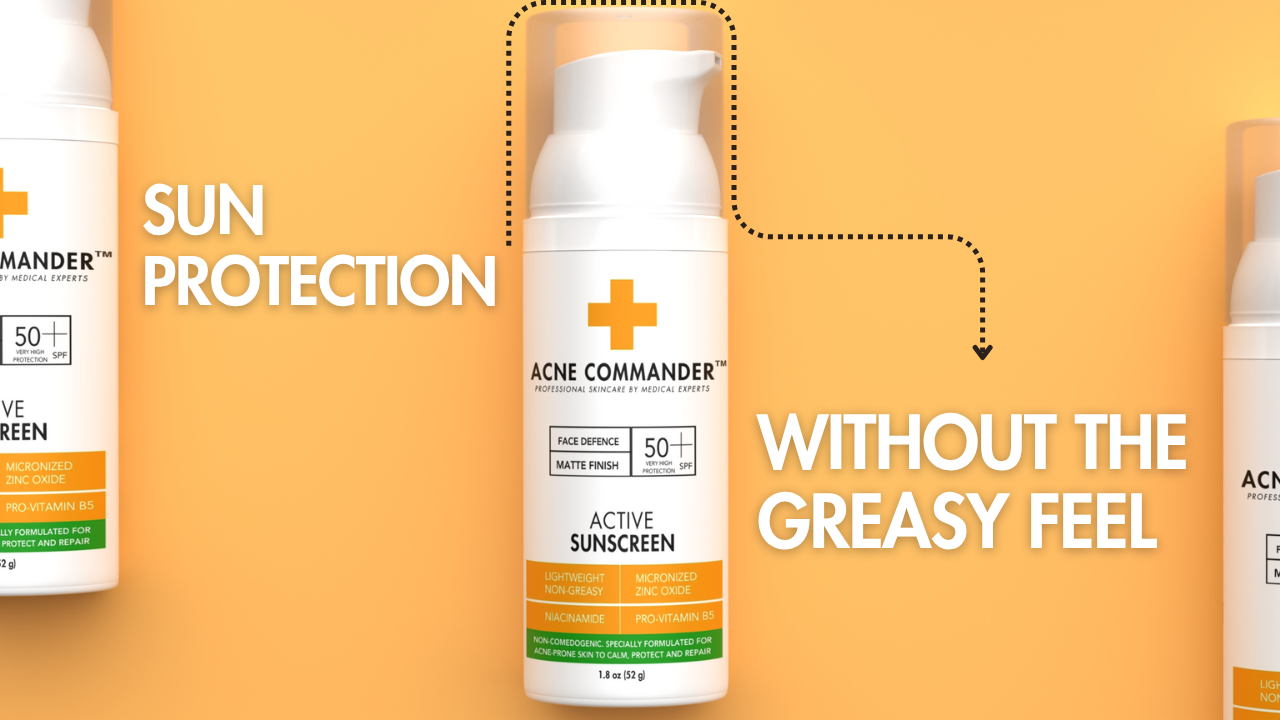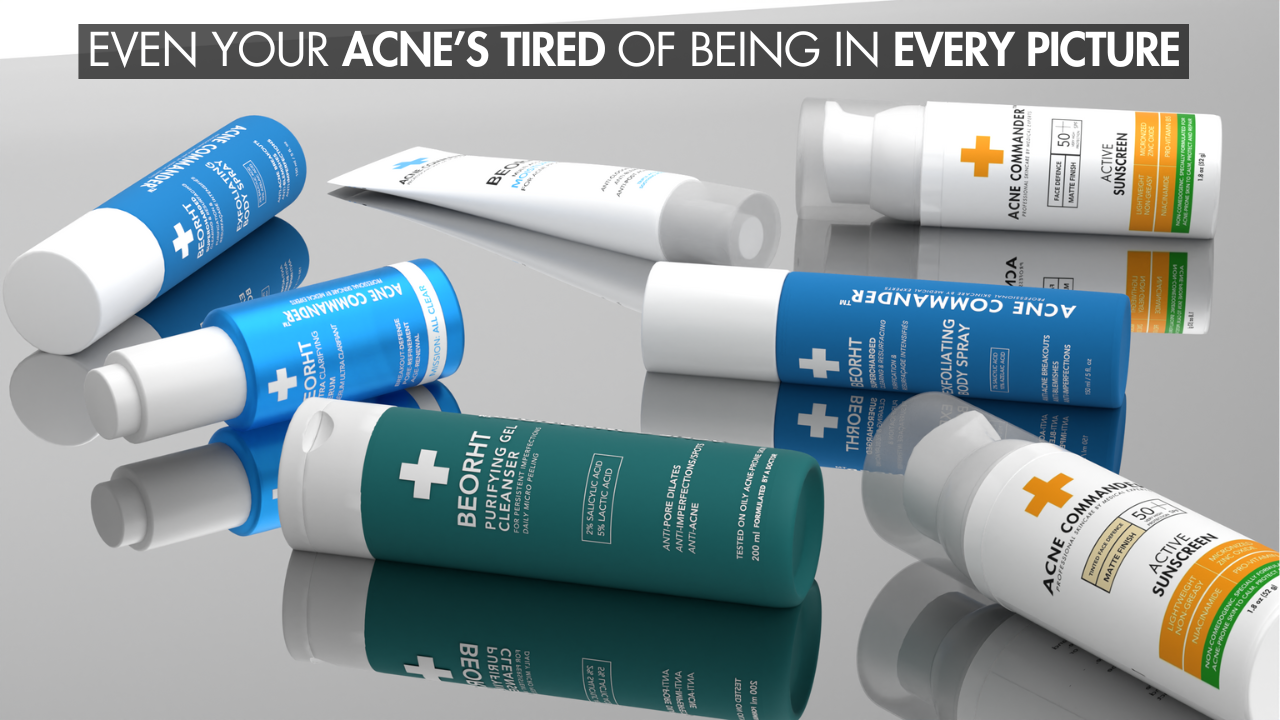Introduction: The Rise of Natural Skincare in the Battle Against Acne
As people become more conscious about what they put on their skin, the demand for natural skincare, particularly for acne, has skyrocketed. From essential oils to plant-based hydrators, many seek homemade, chemical-free alternatives to harsh, drying acne products. But this raises an important question: Can natural moisturizers really help acne-prone skin? And if so, how do you make one that works without causing more breakouts?
This article provides a complete, science-backed guide on how to make a natural moisturizer for acne, safely and effectively. You’ll learn:
-
What “natural” truly means in skincare
-
The best acne-friendly plant-based ingredients
-
Step-by-step DIY recipes
-
What to avoid (yes, even in natural skincare)
-
How does this compare to advanced professional formulas like Acne Commander 3-in-1 Repairing Moisturiser
Why Moisturizer Matters in Acne-Prone Skin
Acne-prone skin is often misunderstood. People assume it’s “too oily” and doesn’t need moisturizing, but skipping this step is one of the biggest mistakes in acne care. Here’s why moisturizer matters:
-
Hydration balances oil production. Less dehydration = less compensatory sebum
-
Moisture supports the skin barrier, reducing inflammation and irritation
-
The right moisturizer calms redness, reduces peeling from actives, and soothes painful breakouts
Even if you’re going all-natural, your moisturizer should address these issues, without clogging pores.
What Does “Natural” Mean in Skincare?
In skincare, “natural” typically refers to ingredients derived from plants, minerals, or animal sources without synthetic alteration.
However, natural ≠ is safe, and synthetic ≠ is bad.
Many natural ingredients (like citrus oils or raw honey) can irritate acne-prone skin. So while making a natural moisturizer sounds great, you need to:
-
Understand comedogenicity
-
Respect pH levels
-
Ensure your product is hygienic and stable
What to Look for in a Natural Moisturizer for Acne
A good natural moisturizer should be:
-
Non-comedogenic
-
Lightweight
-
Hydrating (not greasy)
-
Anti-inflammatory
-
Antibacterial or barrier-supporting
-
Free from fragrance, alcohol, and essential oils
Let’s look at the best ingredients that meet this profile.
Best Natural Ingredients for Acne-Friendly Moisturizers
🔹 Humectants (Hydrators)
|
Ingredient |
Function |
|
Aloe Vera |
Soothes, hydrates, anti-inflammatory |
|
Glycerin (plant-based) |
Deep hydration, barrier support |
|
Honey (preferably Manuka) |
Antibacterial, gentle humectant |
🔹 Emollients (Softeners)
|
Ingredient |
Function |
|
Jojoba Oil |
Closest to the skin’s sebum, non-comedogenic |
|
Rosehip Seed Oil |
Brightens, helps with post-acne marks |
|
Squalane (plant-derived) |
Lightweight and hydrating |
|
Argan Oil |
Anti-inflammatory, gentle for acne |
🔹 Anti-Acne Botanicals
|
Ingredient |
Function |
|
Green Tea Extract |
Reduces oil and bacteria |
|
Turmeric |
Brightens, anti-inflammatory |
|
Neem Oil |
Antibacterial, acne-fighting |
|
Calendula |
Soothing and healing |
Ingredients to Avoid in Natural Acne Moisturizers
Not all natural ingredients are safe for acne. Avoid:
|
Ingredient |
Reason |
|
Coconut Oil |
Highly comedogenic (rating 4/5) |
|
Shea Butter (unrefined) |
Too heavy for face |
|
Cocoa Butter |
Clogs pores |
|
Essential Oils |
Irritating to broken skin |
|
Raw dairy or yogurt |
Bacterial contamination risk |
|
Apple Cider Vinegar (undiluted) |
Harsh, disrupts pH |
How to Make a Natural Moisturizer for Acne – Step-by-Step
Equipment Checklist:
-
Sterilized glass jar
-
Clean whisk or spatula
-
Gloves (optional but recommended)
-
Refrigerator for storage
DIY Recipe 1: Aloe + Jojoba Acne Gel
Best For: Oily, inflamed, sensitive, acne-prone skin
Ingredients:
-
2 tablespoons aloe vera gel (pure)
-
1 teaspoon jojoba oil
-
1/2 teaspoon vegetable glycerin
-
Optional: 1 drop turmeric extract or green tea extract
Instructions:
-
In a sanitized bowl, whisk all ingredients until smooth.
-
Transfer to an airtight glass jar.
-
Store in the fridge up to 7 days.
Benefits:
-
Soothes redness and inflammation
-
Hydrates without clogging
-
Lightweight and non-greasy
DIY Recipe 2: Rosehip + Honey Glow Balm
Best For: Acne-prone skin with dark spots or post-acne pigmentation
Ingredients:
-
1 tablespoon rosehip seed oil
-
1 teaspoon Manuka honey
-
1 tsp aloe vera gel
-
1 capsule Vitamin E (optional)
Instructions:
-
Warm honey slightly (not hot).
-
Mix all ingredients in a bowl.
-
Let cool and store airtight.
Usage Tip: Use at night. It may feel sticky under makeup or SPF.
DIY Recipe 3: Neem Oil Clarifying Cream
Best For: Active breakouts and bacterial acne
Ingredients:
-
1 tablespoon jojoba oil
-
3–5 drops neem oil
-
1 tsp aloe vera gel
-
1 tsp calendula extract or infusion
Instructions:
-
Combine and stir in a glass jar.
-
Patch test before full-face application (neem is potent).
-
Use at night for best results.
Shelf Life and Hygiene Tips
-
Most DIY moisturizers last 5–10 days refrigerated
-
Use distilled water or hydrosols if using any liquid
-
Avoid dipping fingers directly into the jar; use a spatula
-
Discard if smell, texture, or color changes
When DIY Isn’t Enough: The Limits of Natural Moisturizers
DIY moisturizers are a great entry into skincare, especially for very sensitive or beginner routines. But they fall short in several areas:
|
Limitation |
Why It Matters |
|
No preservatives |
Risk of bacteria and mold |
|
Lack of actives |
No BHA, niacinamide, zinc PCA |
|
Unstable pH |
Can damage barrier or cause irritation |
|
Inconsistent results |
Formulas aren’t standardized |
|
No clinical testing |
Can’t guarantee results or safety |
That’s why even those who start with DIY often transition to professional formulations like Acne Commander 3-in-1 Repairing Moisturiser.
Why Acne Commander Outperforms Natural DIY
Acne Commander was built using both natural principles and clinical science.
|
Feature |
Acne Commander |
DIY |
|
Non-comedogenic |
✅ |
❌ Not guaranteed |
|
Salicylic Acid |
✅ (2 types) |
❌ |
|
Niacinamide |
✅ |
❌ |
|
Zinc PCA |
✅ |
❌ |
|
Ferments for microbiome |
✅ |
❌ |
|
Preserved + stable |
✅ |
❌ |
|
Shelf life |
24+ months |
7–10 days |
With hydrators, sebum regulators, exfoliants, and microbiome support, Acne Commander targets all four causes of acne, oil, clogged pores, bacteria, and inflammation, while hydrating like a natural moisturizer.
How to Transition from DIY to Acne Commander
-
Stop all DIY products for 2–3 days to reset your skin
-
Patch test the Acne Commander on a small area
-
Use once daily for 3 days, then increase to twice daily
-
Expect:
-
Oil balance in 5–7 days
-
Redness reduction in 3 days
-
Acne improvement in 2–3 weeks
FAQs: Natural Moisturizers for Acne
❓ Can natural moisturizers treat acne?
Only mildly. They can soothe and hydrate, but most lack pore-clearing or antibacterial actives.
❓ Is aloe vera enough as a moisturizer?
It’s a great base, but not enough on its own. Needs emollients like jojoba or squalane.
❓ What oil is best for acne-prone skin?
Jojoba, rosehip, hemp seed, and squalane are the safest.
❓ Can I mix essential oils for fragrance?
Avoid essential oils entirely; they can irritate and damage acne-prone skin.
❓ Should I still use sunscreen?
Yes. Natural moisturizers don’t protect against UV. Use a non-comedogenic SPF 30+.
Conclusion: Make It Natural, But Make It Smart
Creating a natural moisturizer for acne can be a safe, soothing option if you use the right ingredients, practice strict hygiene, and understand your skin’s unique needs. Hydration, anti-inflammation, and oil regulation are your primary goals.
But if your acne is persistent, hormonal, or inflammatory, DIY solutions may not be enough.
That’s why Acne Commander 3-in-1 Repairing Moisturiser exists, to offer the best of both worlds:
-
Natural skin-soothing botanicals
-
Clinical-grade acne actives
-
Non-comedogenic, sensitive skin-safe formula
It’s the natural evolution of DIY, but with science, safety, and guaranteed results.





